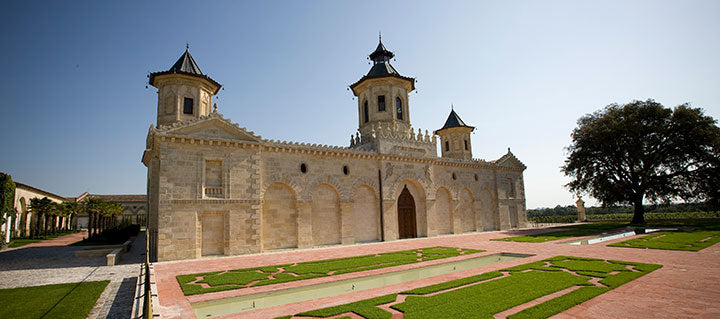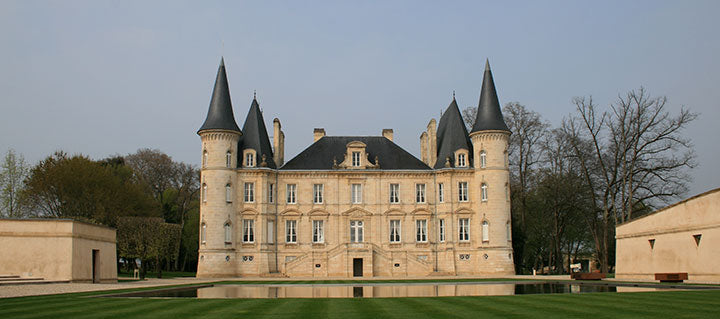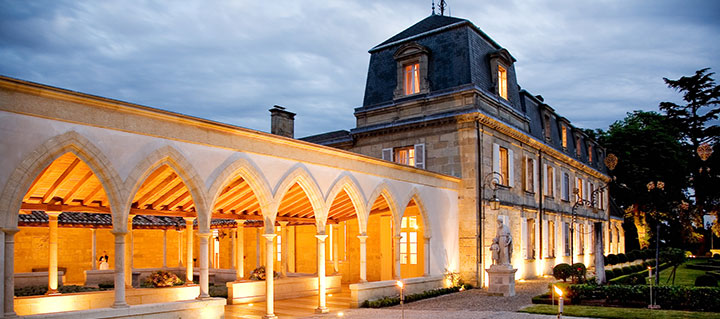
ST ESTÈPHE
St Estèphe, the most northern of the four great Médoc communal crus, has a unique terroir made up of layers of gravel on a dense clay base. Merlot and Cabernet Sauvignon thrive, and the clay subsoil creates powerful, textured tannins which ensure St Estèphe stands out from the pack. It is home to many excellent châteaux such as Cos d’Estournel, Montrose and Calon Ségur.

PAUILLAC
South of St Estèphe is Pauillac, king of the Left Bank communes, home to three first growths and a host of other classified growths. On its well-draining, gravelly soils Cabernet Sauvignon reaches fantastic heights of complexity and concentration. The wines are full-bodied yet fresh with compact tannins and classic Bordeaux aromatics: pencil shavings, cedar and blackcurrant.
ST JULIEN
St Julien is like the middle child of the Médoc – not as assertive as Pauillac nor as coquettish as Margaux. It lies firmly between the two more outspoken communes and as a result produces a blend of them both. Its wines have often been sought out by aficionados for their balance and consistency, particularly in the UK, and for many it is the epitome of classic Left Bank Claret. It has several superb second growths including Léoville Las Cases, Léoville Barton, Léoville Poyferré and Ducru Beaucaillou, and an array other consistent high-performers.
MARGAUX
Plump, silky and seductive are the words often used to describe wines from Margaux. With the thinnest soil and the highest proportion of chunky gravel in the Médoc, the vineyards drain well but are also susceptible to vintage variation. The wines tend to have the highest proportions of Merlot within the “core” of the Médoc, further adding to their ample roundness and openness. It is home to the largest number of classified growths including its namesake first growth, Château Margaux, as well as third growths, Palmer and d’Issan.

PESSAC LÉOGNAN
Located directly south of the city of Bordeaux, Pessac-Léognan is famous for its intense gravel soils, deposited during the last Ice Age, which add profound mineral complexity to its wines. Producing superb red and white wines, the most renowned châteaux of the commune include Haut Brion, La Mission Haut Brion, Haut Bailly and Domaine de Chevalier.
POMEROL
The small sub-region of Pomerol is situated northeast of the industrious city of Libourne. Its soils are predominately iron-rich clay with a smattering of gravel that produce wines with extraordinary power and depth. As a result of this clay-dominance, it has the highest percentage of Merlot planted in all of Bordeaux. Certain châteaux are produced exclusively from this grape, but most incorporate smaller quantities of Cabernet Sauvignon and Cabernet Franc as well. Despite its hefty (if not exclusive) proportion of Merlot, many people think of wines from this region as separate entities. As one wine aficionado stated recently, “It’s not Merlot. It’s Pomerol.” Despite the region’s small size, it contains some of the world’s most sought after (and expensive) wines including Pétrus, Le Pin, Lafleur, l’Evangile and Vieux Château Certan. Unlike other Bordelais subregions, there is no system of classification. The châteaux are traded on reputation alone.
ST EMILION
South of Pomerol lies the medieval, perched village of St Emilion, with its round, rich and often hedonistic wines. Two main soil types dominate – the gravelly, limestone slopes that delve down to the valley from the plateau and the valley itself, comprised of limestone, gravel, clay and sand. It was not until the early 1990s that attention was brought to this region, when Robert Parker, the famous wine critic, began reviewing their Merlot-dominated wines and giving them hefty scores. The rest is history as they say. Similar to the Médoc, there is a classification system in place dating from 1955 with several levels of quality. These include its regional appellation of St Emilion, St Emilion Grand Cru, St Emilion Grand Cru Classé and St Emilion Premier Grand Cru Classé, which is further divided into “A” (Ausone and Cheval Blanc) and “B” (including Angélus, Canon, Figeac and a handful of others). The classification is redone every 10 years to reflect the quality of more recent vintages.
